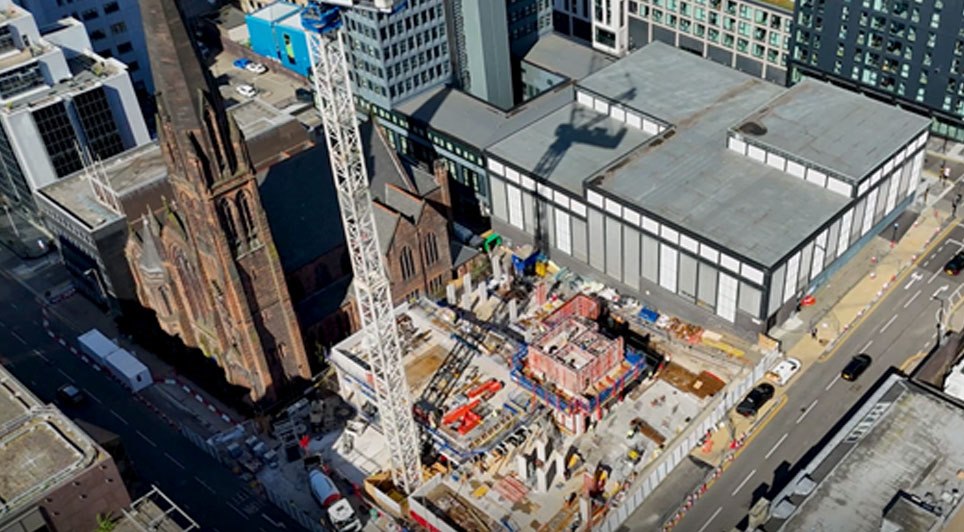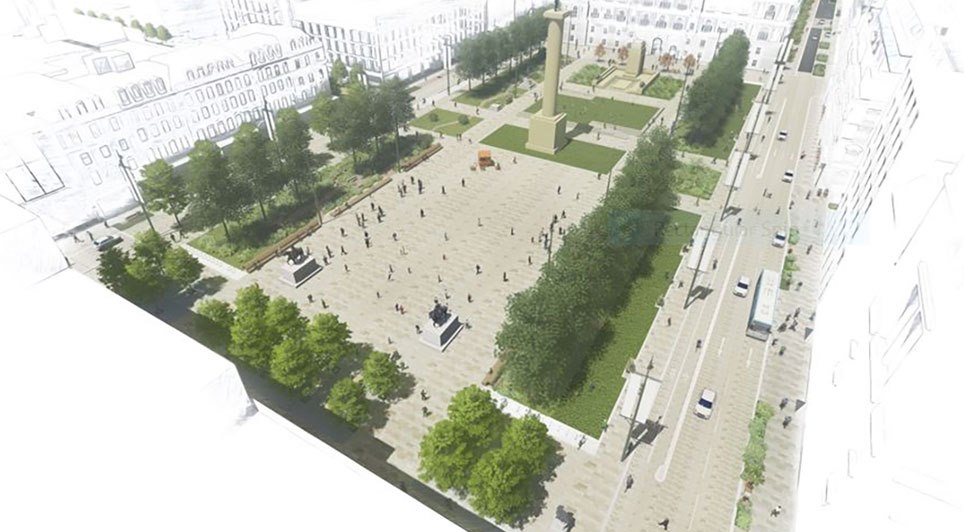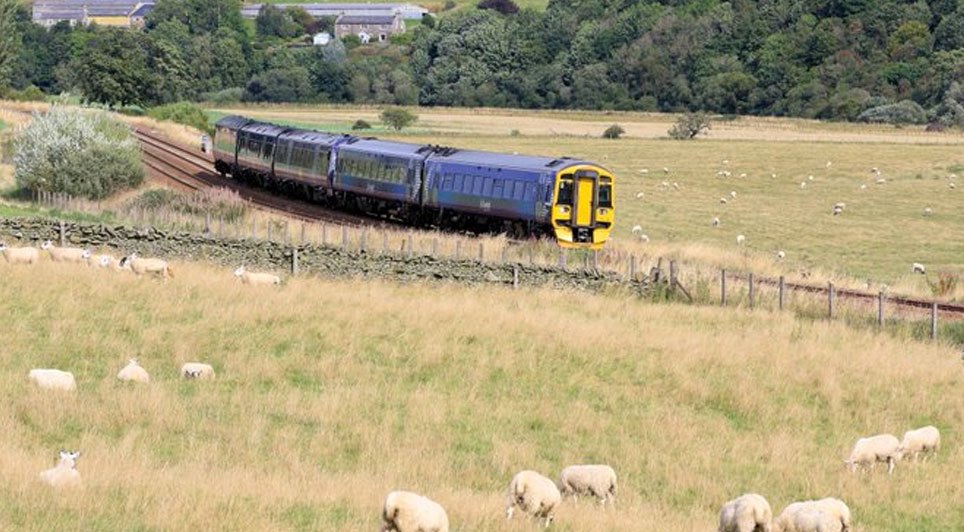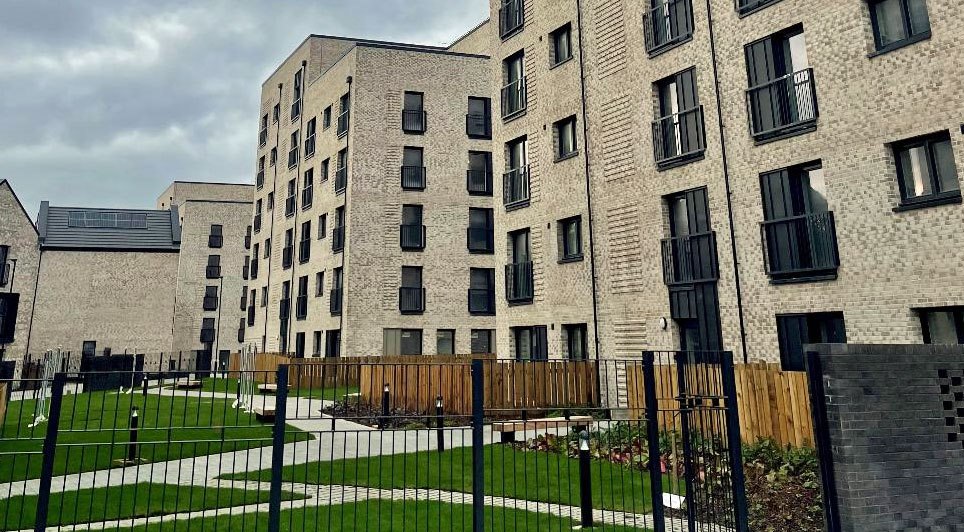Historic Scotland’s recreation of a lost Renaissance masterpiece has been welcomed by Fiona Hyslop, Minister for Culture and External Affairs.
Back in the 1540s the ceiling of the King’s Inner Hall, in the royal palace of James V at Stirling Castle, was decorated with magnificent oak carvings showing the faces of kings, queens, lords, ladies, Roman emperors and ancient heroes.
But the ceiling was taken down in 1777 – some of the carvings were destroyed and the rest ended up scattered throughout Scotland and England.
Known as the Stirling Heads, 34 of these metre-wide oak medallions have survived, and six years ago an initiative got underway to make a full set of copies to redecorate the ceiling in glorious, colourful 16th century style.
This has now been completed and the King’s Inner Hall is once again rich with images of historical figures including James V, his French queen Mary of Guise, Henry VIII of England and Julius Caesar.
The Minister said: “This is an important milestone in one of the most exciting projects of its kind ever undertaken in Scotland.
“The new Stirling Heads, and this spectacular ceiling will be among the main attractions of the palace when it opens later this year.”
Historic Scotland is returning the palace to how it may have looked when it was home to the royal court.
The £12 million palace project also involves creating a special gallery on the upper floor of the palace where the original Stirling Heads will be on display.
Peter Buchanan, Stirling Castle Palace Project Manager, said: “We’ve been looking forward to this moment for a long time – the new versions of the heads took five years to carve and since then a great deal of work has been done to create the ceiling and get the painting just right.
“The original ceiling was a masterpiece of Scottish Renaissance art and craftsmanship and our recreation is designed to be just as impressive.
“When people see it for the first time they sometimes just stand and say ‘wow’.”
Fragments discovered on the heads prove that they used to be painted and extensive research has taken place to make sure that suitable colours have been used for the modern versions.
The painting was carried out by a specialist art conservation and restoration team led by Graciela Ainsworth, from Leith.
Ms Ainsworth said: “There’s nothing quite like the Stirling Heads anywhere in the world, and the palace project is wonderful, so it is fantastic to be involved.
“I really love Scottish Renaissance styles, they have a distinctive boldness, strength and raw energy – what Historic Scotland is doing really recaptures the character of the art of the time.”
It has taken four painters around three months to complete the heads, using materials and techniques as close as possible to those of the 16th century.
One of the main aims was to use the paint to bring out the tremendous quality of the carving and to give the strongest possible three-dimensional effect.
The work was carried out with the heads already fixed to the ceiling, so the artists would know exactly how they would appear to viewers on the ground.
The new heads were hand-carved by Livingston-based master craftsmen John Donaldson.
Mr Donaldson said: “Carving new versions of the Stirling Heads was a once-in-a-lifetime opportunity, and the new ceiling looks absolutely stunning.
“It’s quite a feeling to have your work included in a project of this scale and importance and which will hopefully be enjoyed by millions of visitors for many decades to come.”
In addition to the replica heads carved for the ceiling, several extras were made for education and display.
One is only partly painted, so visitors can see the difference between the natural oak and the final version.
The original heads were commissioned by James V, as part of the scheme to build a new palace which celebrated his marriage to Mary of Guise, it is uncertain if he ever saw the ceilings completed.
The king died, aged just 30, in December 1542 when the building was probably still being finished – leaving his widow with a baby girl less than a week old.
The following year Mary of Guise and the infant Mary, Queen of Scots arrived at Stirling, which became their main residence until the ‘Little Queen’ was sent to the French court to keep her safe from the English in 1548.
Carved heads are known to have been used to decorate at least two palace ceilings.
While we do not know where each of the surviving heads was originally located, the new versions have been displayed in a way that would have appealed to a Renaissance audience.
This has involved arranging them in a way that emphasises the king and his royal ancestors, ranks him alongside other important European rulers of the time, and associates him with great men of history and mythology – including Hercules.
(GK)
Construction News
18/01/2011
Stirling Heads Reveal Their Painted Faces

15/04/2025
Construction of a £70 million student accommodation development at 292-298 St Vincent Street in Glasgow has reached a significant milestone, with the building now visibly rising from the ground.
Drone footage has captured the progress of the project, which is a partnership between developer Artisa

15/04/2025
Energy regulator Ofgem is expected to confirm today (April 15) its finalised Connections Reform process, designed to expedite grid connections for renewable energy projects that are ready and crucial for achieving the UK's clean power targets for 2030 and beyond.
The new connections system, anticip

15/04/2025
The ambitious transformation of Glasgow’s landmark George Square has moved into a tangible phase with the commencement of the erection of hoardings around the perimeter of the civic space. Starting today, the hoardings will enclose the Square for the duration of its 18-month redevelopment.
The pane

15/04/2025
Members of the public are invited to attend a consultation feedback event to discuss the proposed infrastructure associated with a new underground electricity transmission cable between the Kinardochy and Errochty substations in Perthshire.
The event will take place on Monday, 28 April, from 4 pm t

15/04/2025
Turner & Townsend have been appointed as project managers to develop a business case for the potential extension of the Borders Railway beyond its current terminus at Tweedbank to Hawick and Carlisle.
This key appointment will enable crucial work to progress on the project, including feasibility s

15/04/2025
Arran Community Renewables, a Community Benefit Society based on the Isle of Arran, has secured planning consent for a 6 MW solar farm. The Glenkiln Solar Farm, located approximately 1km west of Lamlash, is projected to generate 5,600MWh of clean renewable energy annually from 2027.
The £5 million

15/04/2025
A new Route Map has been published by the Scottish Land Commission (SLC) to ensure communities across Scotland secure tangible and long-lasting benefits from nature restoration projects and investment in the country's natural environment.
The practical guide is designed for landowners, developers,

15/04/2025
Award-winning principal contractor Procast Group has further expanded its presence across Scotland with the opening of a new base in Dumfries. The Hamilton-based firm has invested £30,000 in a new warehouse and office facility in the Maxwelltown Industrial Estate in Dumfries and Galloway, marking it

14/04/2025
Glasgow City Council's Affordable Housing Supply Programme (AHSP) facilitated the completion of over 1,000 new affordable homes in the city during the past year, despite facing budgetary reductions at the start of the financial year.
The initial grant of £78.687 million from the Scottish Government

14/04/2025
A key phase of Scottish Water's £11.5 million project to upgrade a strategic rising sewer main connecting Renfrew and Glasgow is set to begin, resulting in a significant road closure.
From Monday, 28 April 2025, Ferry Road in Renfrew will be closed to all vehicular traffic for a period of four mont
 Scotland
Scotland UK
UK Ireland
Ireland London
London











